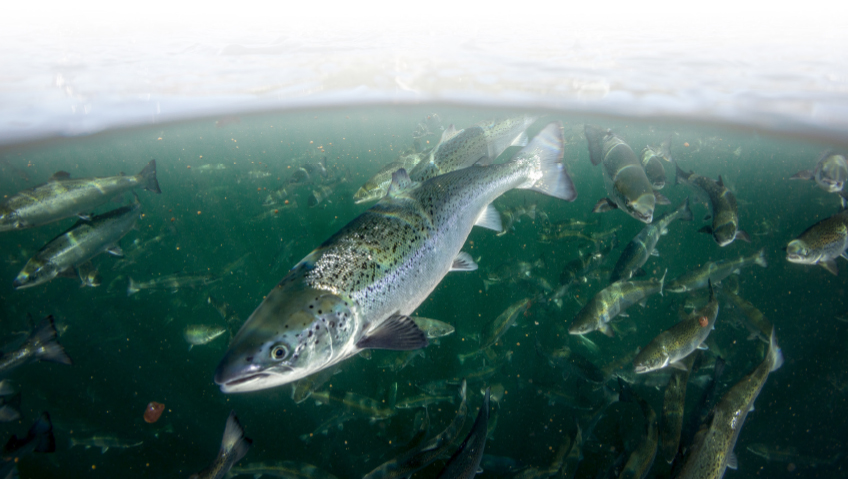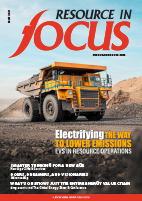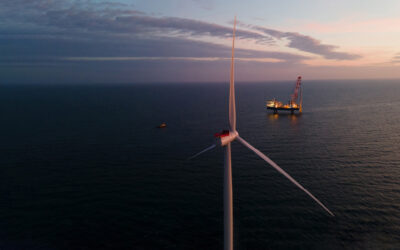Canada’s vast coastlines should provide a significant competitive advantage in the race to provide the world with safe, secure and sustainable seafood through aquaculture.
Consider Canada’s sprawling coastline—at approximately 243,041 kilometres (151,019 miles), it’s the longest on the planet. Along with expansive lake coverage (563 lakes exceeding 100 square kilometres or 38.6 square miles), you might assume that Canada is one of the largest producers of fish and seafood on the planet.
However, Canada’s current position may surprise you. It is behind first-ranked China, Indonesia, India, the United States, and even Norway, which produces 10 times more seafood than Canada with a fraction of the population and less than half the coastline. Yet there are many proud Canadian fish farmers working hard to advance this ranking through a competitive, sustainable and growing farm-raised seafood sector that harnesses Canada’s natural advantages to become a global aquaculture leader.
Headquartered in Ottawa, CAIA is a national industry association representing the interests of aquaculture operators, provincial and regional aquaculture associations, and suppliers and feed companies. The organization speaks on behalf of the nation’s seafood farmers and represents their interests to government and political leaders, policymakers and regulators—all the while working to ensure that Canadian seafood reaches the kitchen table and feeds families. CAIA’s membership embraces finfish and shellfish producers, aquatic plant farmers, and many more.
Championing the quality and sustainability of Canada’s farm-raised seafood, CAIA stands up for the many economic, public health, and environmental benefits the sector brings to Canadians.
The original smartfood
Regular servings of fish, rich in protein and packed with Vitamin D, iodine, Omega-3 fatty acids, and other essential nutrients, regular servings of fish are an important part of an ideal, heart-healthy diet. Linked to improvements in mental health, memory and vision, seafood is ideal for fast-to-prepare, delicious, and affordable meals.
Environmentally, Canada’s seafood industry is one of the most sustainable in the world and has one of the lowest carbon footprints of any high-protein food.
So why then do Canadians consume so little farm-raised seafood? According to Timothy J. Kennedy, President and CEO of CAIA, only about 1.6 percent of the Canadian diet is made up of seafood. Yet by simply doubling this to 3.2 percent, he adds, Canadians could experience tremendous benefits.
“Instead of having one seafood meal a week, you might have two,” says Kennedy. “What we’ve seen in terms of carbon emission reductions is the equivalent of three megatons of carbon dioxide emissions—the equivalent of about 650,000 cars off the road—by switching away from higher-carbon products in the food system. And of course, there are all sorts of health benefits from eating farm-raised seafood as well.”
As leader of the national alliance for the better part of six years, Kennedy has experienced the challenges faced by Canada’s relatively young aquaculture industry, which dates back only about 40 years. CAIA works assiduously to realize this by growing and promoting aquaculture in Canada, all in the best interests of farm-raised seafood companies and associated businesses. And while our seafood industry continues to make strides, there remains a hurdle in terms of convincing Canadians to enjoy this protein more often.
Promoting seafood
After conducting market research in 2019, CAIA released some interesting takeaways about the potential market’s lower-than-expected seafood consumption. One reason is the perceived cost of seafood, which is sometimes linked to a misunderstanding of portion size. “If you’re comparing portions of salmon to beef or pork, pork might be cheapest, but salmon might be similar to other meat products, so there’s a bit of a misconception about price,” says Kennedy.
Another factor is familiarity. With so many living in cities away from coastal areas, seafood isn’t as commonly enjoyed by some Canadians, compared to other proteins. The texture, smell and taste are also reasons some are hesitant to try it. In order to change these perceptions, the ‘Choose Canadian Seafood’ Task Force was created to promote national seafood consumption and address consumer questions. Led by CAIA and The Fisheries Council of Canada (FCC), the new campaign features a dynamic website (www.chooseseafood.ca) showcasing seafood’s versatility, including why Canadians should choose seafood, nutritional facts, and much else besides. The website—a collaborative effort, according to Kennedy, between the wild capture seafood sector, and the aquaculture sectors in Canada, funded by the federal government and the provinces—also offers consumers a generous selection of easy-to-prepare seafood recipes.
Along with the Choose Canadian Seafood site, CAIA is looking at how to make seafood more consumer-friendly by focusing on new approaches to packaging.
“If you think about food-to-go, most people don’t think of fish,” says Kennedy, “so there’s a considerable effort in this campaign to make the meals very simple, fast, and convenient. These recipes are great, fast and tasty, so we hope they’ll engage a bunch of people.”
In the coming months, the association will conduct follow-up research to gauge awareness of the campaign and to look at what resonated with Canadians on social media.
Recent developments in Canadian aquaculture
The most popular seafood among Canadians is salmon, followed by shrimp, tuna, cod, scallops, and other products. In fact, roughly 80 percent of families in Canada enjoy salmon at least once a month, so it makes good sense to continue nurturing the work of Canadian salmon farmers. At the end of June 2022, this was the case as Joyce Murray, Minister of Fisheries, Oceans and the Canadian Coast Guard, extended most salmon farming licenses in British Columbia for two years—an important goal that CAIA had been working toward, since there were questions concerning the federal government’s support of B.C.’s salmon farming licenses.
In addition to the licensing progress, a new process was also announced by the federal government which would help develop a plan for transition, including how to deploy new technology and attract more investment to keep the sector flourishing. “That was a major decision and the culmination of a couple of years of uncertainty, so that was positive,” says Kennedy.
Along with provincial counterparts in B.C., CAIA has been vocal about the benefits of salmon farming to the province and the need to spread greater awareness—although salmon remains Canada’s top seafood choice (making up four out of every ten seafood meals), the public doesn’t know that 97 percent of salmon harvested in Canada are farm-raised. This led to the Love Salmon campaign, “an initiative to help educate Canadians and policymakers about the truth and facts of farm-raised salmon in Canada.”
Launched this past spring, LoveSalmon.ca highlights the many positives of farm-raised salmon, including nutritional value, and how farming helps meet a growing global demand for seafood while protecting oceans and coasts by easing the pressure on wild salmon.
The site also clears up the misinformation surrounding farm-raised salmon, much of it going back decades. “We knew it was important to have a new initiative to clear the air about this,” says Kennedy.
Sustainable seafood solutions
Initiatives such as Love Salmon underscore the importance of environmental responsibility and sustainability in aquaculture—including the ongoing protection of wild Pacific salmon. Minister Murray recently acknowledged the historic threats faced by the species, and how the government is acting “to protect and return wild salmon to abundance and ensure Canada is a global leader in sustainable aquaculture,” she says. “Working together with First Nations, the Province, industry, and British Columbians, we will transition the aquaculture industry to one which leads with new technology while reducing or eliminating interactions with wild Pacific salmon.
“We recognize the urgent need for ecologically sustainable aquaculture technology, and we’re prepared to work with all partners in a way that’s transparent and provides stability in this transition.”
Together with Minister Murray, other East Coast ministers have pledged their vigorous support for aquaculture development in Atlantic Canada.
Looking to the industry’s future
Along with CAIA encouraging greater consumption of seafood for the benefit of all and educating the public through the Choose Canadian Seafood and Love Salmon campaigns, many members are exploring new innovations as well.
Calgary-based Botaneco® Inc., which specializes in isolating natural ingredients from oilseeds, is examining ways to extract high-grade proteins from canola and sunflower oil, replacing fish meal. Elsewhere, researchers are looking at ways to trap fish waste from salmon farms and process it into high-grade fertilizer.
Amongst new approaches and changing consumer perspectives, growth also remains the focus of Canada’s seafood sector—currently employing 90,000 men and women and generating about $9 billion in gross domestic product, the industry has the potential to become a world leader. And with the greatest coastal capacity of any country, a clear, long-term message is needed from the government confirming Canada’s intentions.
“We need a signal from the federal government and other governments that they want to be world leaders—and Atlantic provincial ministers have already signalled that—but the federal government has not yet given that signal,” says Kennedy.
“So there’s been a lot of uncertainty. And basically, for the last 20 years, we have flatlined in volume growth. A country like Norway which has quite a bit less capacity is producing 10 times more than us. They have a goal by 2050 of increasing the value of their seafood sector by five times what it is today. Other countries have similar goals and targets, but in Canada we just do not have that. And we need it.”













